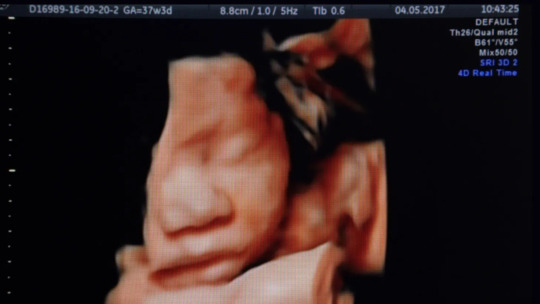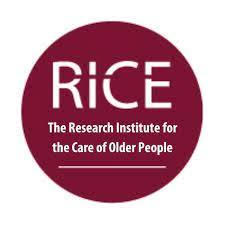#new treatment in Alzheimer's disease?
Link

#alzheimer#Alzheimer's treatments#latest breakthrough in Alzheimer's research#new treatment in Alzheimer's disease?#Alzheimer's Cure#Dementia Care centre in delhi
0 notes
Text






‘Fragile Microbiomes’ by bio-artist Anna Dumitriu
1. SYPHILIS DRESS- This dress is embroidered with images of the corkscrew-shaped bacterium which causes the sexually transmitted disease syphilis. These embroideries are impregnated with the sterilised DNA of the Nichols strain of the bacterium - Treponema pallidum subsp. pallidum - which Dumitriu extracted with her collaborators.
2. MICROBE MOUTH- The tooth at the centre of this necklace was grown in the lab using an extremophile bacterium which is part of the species called Serratia (Serratia N14) that can produce hydroxyapatite, the same substance that tooth enamel is made from.
The handmade porcelain teeth that make up this necklace have been coated with glazes derived from various bacterial species that live in our mouths and cause tooth decay and gum disease, including Porphyromonas gingivalis, which can introduce an iron-containing light brown stain to the glaze.
3. TEETH MARKS: THE MOST PROFOUND MYSTERY- In his 1845 essay “On Artificial Teeth”, W.H. Mortimer described false teeth as “the most profound mystery” because they were never discussed. Instead, people would hide the stigma of bad teeth and foul breath using fans.
This altered antique fan is made from animal bone and has been mended with gold wire, both materials historically used to construct false teeth (which would also sometimes incorporate human teeth). The silk of the fan and ribbon has been grown and patterned with two species of oral pathogens: Prevotella intermedia and Porphyromonas gingivalis. These bacteria cause gum disease and bad breath, and the latter has also recently been linked to Alzheimer’s disease.
4. PLAGUE DRESS- This 1665-style 'Plague Dress' is made from raw silk, hand-dyed with walnut husks in reference to the famous herbalist of the era Nicholas Culpeper, who recommended walnuts as a treatment for plague. It has been appliquéd with original 17th-century embroideries, impregnated with the DNA of Yersinia pestis bacteria (plague). The artist extracted this from killed bacteria in the laboratory of the National Collection of Type Cultures at the UK Health Security Agency.
The dress is stuffed and surrounded by lavender, which people carried during the Great Plague of London to cover the stench of infection and to prevent the disease, which was believed to be caused by 'bad air' or 'miasmas'. The silk of the dress references the Silk Road, a key vector for the spread of plague.
5. BACTERIAL BAPTISM- based on a vintage christening gown which has been altered by the artist to tell the story of research into how the microbiomes of babies develop, with a focus on the bacterium Clostridioides difficile, originally discovered by Hall and O’Toole in 1935 and presented in their paper “Intestinal flora in new-born infants”. It was named Bacillus difficilis because it was difficult to grow, and in the 1970s it was recognised as causing conditions from mild antibiotic-associated diarrhoea to life-threatening intestinal inflammation. The embroidery silk is dyed using stains used in the study of the gut microbiome and the gown is decorated with hand-crocheted linen lace grown in lab with (sterilised) C. difficile biofilms. The piece also considers how new-borns become colonised by bacteria during birth in what has been described as ‘bacterial baptism’.
6. ZENEXTON- Around 1570, Swiss physician and alchemist Theophrastus Paracelsus coined the term ‘Zenexton’, meaning an amulet worn around the neck to protect from the plague. Until then, amulets had a more general purpose of warding off (unspecified) disease, rather like the difference today between ‘broad spectrum’ antibiotics and antibiotics informed by genomics approaches which target a specific organism.
Over the next century, several ideas were put forward as to what this amulet might contain: a paste made of powdered toads, sapphires that would turn black when they leeched the pestilence from the body, or menstrual blood. Bizarre improvements were later made: “of course, the toad should be finely powdered”; “the menstrual blood from a virgin”; “collected on a full moon”.
This very modern Zenexton has been 3D printed and offers the wearer something that genuinely protects: the recently developed vaccine against Yersinia pestis, the bacterium that causes plague.
#my favourite pieces from this exhibition that I visited last month at the Thackray medical museum in Leeds#absolutely fascinating reading about the process and meanings behind these works#mine#anna dumitriu#works
2K notes
·
View notes
Text
RICE Alzheimer's Research Institute



Terry died on 12 March 2015, having given his PCA a run for its money. Open about his diagnosis, he has helped to unlock the secrecy and stigma that often surrounds dementia. His legion of fans is undoubtedly grateful that despite the inevitable progression of the PCA he was able to fight his ‘embuggerance’ and continue to produce a number of both well-received and well-reviewed books. Terry was also a great example to me in emphasizing how important it is that, in caring for people with any type of dementia, we always look for what people with a condition like PCA can still do, rather than what they can’t: by maximizing what is possible, a person can still live well with dementia for a significant time.
–Professor Roy Jones, Director of RICE
(taken from “Terry Pratchett: His World”)
I wanted to post something for the Glorious 25th about the Research Institute for the Care of Older People (RICE) in Bath, where Sir Terry Pratchett received treatment for Post-Cortical Atrophy, the type of Alzheimer’s disease that eventually took his life. From the organization’s website:
RICE established one of the first memory clinic services in the UK in 1987 – a service which has since been widely replicated and is now considered standard and best practice by the NHS. In fact, RICE now runs the NHS Memory Clinic in Bath and North East Somerset on behalf of the local clinical commissioning group and local authority through a sub-contract with HCRG Care Group. To date, we’ve assessed, diagnosed, treated and advised 12,000 people with memory problems and their families in our memory clinic.
Most of RICE’s clinical services and research activities take place in our own purpose built, specialist centre located on the Royal United Hospital site. The building of the RICE Centre was possible as a result of generous donations from major donors, trusts and foundations, and members of the public. RICE moved into the ground and first floor of the centre in 2008. Following the success of the DementiaPlus Appeal and further generous donations from major donors, trusts and foundations and members of the public, RICE converted the attic floor in 2019 to create more office space. This has given us access to much needed additional rooms and offices which will enable us to grow and run more services and activities. We’ve worked hard to ensure that the areas of the centre visited by our patients meets their needs and we regularly receive feedback on how much our patients enjoy their visit to our centre.
RICE not only provides clinical services to patients, but also conducts research into aging and dementia, including performing clinical trials for new drug treatments for memory-related diseases and developing other “techniques for diagnosing, managing, treating and understanding dementia and memory changes in older adults.”
Lady Lyn Pratchett is the patron of the organization, and the website includes a page about how people can donate funds or volunteer at the clinic and participate in fundraising events.
SO, if you’d like to help fund Alzheimer’s research on this Glorious 25th of May–or at any time–in honor of the Man in the Hat, take a look!
#terry pratchett#gnu terry pratchett#discworld#alzheimer's#the glorious 25th of may#signal boosting is appreciated too!#i made this exact post last year too but i'm reposting it rather than reblogging the old one#so that this ends up in the fandom tags again and more people see it
1K notes
·
View notes
Text
One dose of a new treatment, delivered by nasal spray, clears away build-ups of the toxic tau protein associated with Alzheimer’s disease from inside brain cells, improving memory, according to new research. It paves the way for new treatments for the debilitating disease.
A few years ago, abnormal clumps of tau proteins in the brain were found to be associated with Alzheimer’s disease. Since then, researchers have been working on a way of eradicating these toxic tangles, which have become a hallmark of the degenerative disease.
Continue Reading.
455 notes
·
View notes
Text
PROOF THAT COVID VACCINES DAMAGE COGNITION
We Now Have Proof That The COVID “Vaccines” Damage Cognition
Countless people have observed their loved ones becoming “more compliant” and “broken” after the shots.
This was deemed a “conspiracy theory,” but now we have the data to back it up.
A new study from South Korea analyzed the electronic health records of 2.2 million and later 4.3 million individuals in Seoul. What researchers found was alarming.
By comparing the rates of various new medical conditions in vaccinated versus unvaccinated groups over three months, the study revealed that the vaccinated experienced:
A 68% rise in depression
A 44% surge in anxiety and related disorders
A 93.4% increase in sleep disorders
A staggering 138% jump in mild cognitive impairment
A 23% rise in Alzheimer's disease
Dr. Pierre Kory writes:
“In my practice of treating vaccine injuries, one of the three most common symptoms I see is brain fog. So many of my patients had been in the prime of their lives, can now barely function, have significant cognitive impairment and need a lot of help from our nurses to carry out their treatment plans. I never imagined I would see any of this in people far younger than me and instead I see it every day. I bear witness to an immense amount of suffering on a daily basis that is hard to put into words.”
-----------------------------------------
As I have stayed in several of my previous posts, I believed that the government had our best interests at heart and I received all 4 of the 1st round of COVID vaccines. Besides heart issues that suddenly appeared (AFib, flutter), I agree that there has been more brain fog and a cognitive as well as a physical decline since I received those vaccines. It is a sad day when we can no longer trust what our government tells us. Remember, knowledge is power and we need to question EVERYTHING they tell us!
#the great awakening#wef#world economic forum#government corruption#fjb#democrats#joe biden#illegal immigration#bill gates#donald trump#covid vaccine#question everything
515 notes
·
View notes
Text
Alzheimer's-like brain changes found in long COVID patients - Published Sept 2, 2024
New research from the University of Kentucky's Sanders-Brown Center on Aging shows compelling evidence that the cognitive impairments observed in long COVID patients share striking similarities with those seen in Alzheimer's disease and related dementias.
The study, published in Alzheimer's & Dementia, highlights a potential commonality in brain disorders across these conditions that could pave the way for new avenues in research and treatment.
The study was a global effort, and brought together experts from various fields of neuroscience. Researchers at the UK College of Medicine led the study, including Yang Jiang, Ph.D., professor in the Department of Behavioral Science; Chris Norris, Ph.D., professor in the Department of Pharmacology and Nutritional Sciences; and Bob Sompol, Ph.D., assistant professor in the Department of Pharmacology and Nutritional Sciences. Their work focuses on electrophysiology, neuroinflammation, astrocytes and synaptic functions.
"This project benefited greatly from interdisciplinary collaboration," Jiang said. "We had input from experts, associated with the Alzheimer's Association International Society to Advance Alzheimer's Research and Treatment (ISTAART), across six countries, including the U.S., Turkey, Ireland, Italy, Argentina and Chile."
Jiang and the collaborative team focused their work on understanding the "brain fog" that many COVID-19 survivors experience, even months after recovering from the virus. This fog includes memory problems, confusion and difficulty concentrating. According to Jiang, "The slowing and abnormality of intrinsic brain activity in COVID-19 patients resemble those seen in Alzheimer's and related dementias."
This research sheds light on the connection between the two conditions, suggesting that they may share underlying biological mechanisms. Both long COVID and Alzheimer's disease involve neuroinflammation, the activation of brain support cells known as astrocytes and abnormal brain activity. These factors can lead to significant cognitive impairments, making it difficult for patients to think clearly or remember information.
The idea that COVID-19 could lead to Alzheimer's-like brain changes is a significant development.
"People don't usually connect COVID-19 with Alzheimer's disease," Jiang said. "But our review of emerging evidence suggests otherwise."
The research reveals that the cognitive issues caused by COVID-19 reflect similar underlying brain changes as those in dementia. The study's insights emphasize the importance of regular brain function check-ups for these populations, particularly through the use of affordable and accessible tools like electroencephalography (EEG).
The study not only highlights the shared traits between long COVID and Alzheimer's, but also points to the importance of further research.
"The new insight opens avenues for future research and clinical practice, particularly in studying brain oscillations related to neural biomarkers of mild cognitive impairment in people with long COVID," said Jiang.
One of the key findings is the role of astrocytes—support cells in the brain that have not been as thoroughly studied as neurons. The research suggests that damage or activation of these cells by COVID-19 can cause synaptic dysfunctions, leading to the abnormal brain activity observed in both conditions. This discovery is significant because it may help explain why EEG patterns in COVID-19 patients resemble those seen in the early stages of neurodegenerative diseases like Alzheimer's.
Researchers believe this work could have a direct impact on patient care. They are advocating for routine EEG exams to detect early brain changes in both COVID-19 survivors and those at risk for cognitive decline.
"EEG patterns in COVID-19 patients resemble those seen in early neurodegenerative diseases," said Norris.
"These similarities may be due to shared issues such as brain inflammation, astrocyte activity, low oxygen levels and blood vessel damage," said Sompol.
By detecting these changes early, health care providers could potentially identify at-risk individuals sooner and implement interventions to prevent or slow the progression of cognitive decline.
As research continues, the team is particularly interested in how EEG monitoring can predict long-term outcomes in COVID-19 patients and assess the effectiveness of treatments aimed at preventing cognitive decline.
More information: Yang Jiang et al, Parallel electrophysiological abnormalities due to COVID‐19 infection and to Alzheimer's disease and related dementia, Alzheimer's & Dementia (2024). DOI: 10.1002/alz.14089
alz-journals.onlinelibrary.wiley.com/doi/10.1002/alz.14089
#covid#mask up#pandemic#covid 19#wear a mask#sars cov 2#coronavirus#public health#still coviding#wear a respirator#long covid
54 notes
·
View notes
Text
The Best News of Last Week
😷 - Mask off, but guard up! Seems like we're out of the tunnel
1. Abandoned dog seen wandering Detroit streets with stuffed toy rescued, now receiving care

An abandoned dog is preparing for a new home after animal rescue groups spent days trying to find her when she was spotted wandering Detroit with a stuffed toy. Nikki's owner recently died, and she was left to wander the streets with her favorite toy.
As Nikki receives her care, the animal workers are making sure she is ready to head to her foster home. Almost Home is collecting donations to help pay for the treatment and Niki's care. Donate here.
2. New foster care agency matching LGBTQ+ kids with queer carers to become ‘their amazing, wonderful selves’

A new foster care service has been launched to help match LGBTQ+ young people with supportive carers and families in the South East of England. Apex Q, a service from agency Apex Fostering, will help encourage more LGBTQ+ foster carers, provide training and create more placements for queer children.
Apex Fostering, which covers north and east London as well as several southern counties, including Hertfordshire, Essex and Cambridgeshire, launched in 2021 and claims to have already placed more than 60 young people with foster families.
3. Newquay Zoo celebrates birth of rare 'warty' piglets

A pair of rare piglets has been born at Newquay Zoo in Cornwall. The Visayan warty pigs, named for the three pairs of fleshy "warts" on the boar's face, which protect it while fighting rival pigs, are part of a breeding programme at the zoo.
The species lives in the forests of the Philippines, where there could be as few as 200 animals left.
4. New Alzheimer's drug slows disease by a third

We could be entering the era of Alzheimer's treatments, after the second drug in under a year has been shown to slow the disease. Experts said we were now "on the cusp" of drugs being available, something that had recently seemed "impossible".
The company Eli Lilly has reported its drug - donanemab - slows the pace of Alzheimer's by about a third.
5. Covid global health emergency is over, WHO says

The World Health Organization (WHO) has declared that Covid-19 no longer represents a "global health emergency". The statement represents a major step towards ending the pandemic and comes three years after it first declared its highest level of alert over the virus.
But Dr Tedros Adhanom Ghebreyesus warned that the virus remained a significant threat.
6. Doctors have performed brain surgery on a fetus in one of the first operations of its kind

The baby’s condition, known as vein of Galen malformation, was first noticed during a routine ultrasound scan at 30 weeks of pregnancy. The seven-week-old is one of the first people to have undergone an experimental brain operation while still in the womb. It might have saved her life.
Before she was born, this little girl developed a dangerous condition that led blood to pool in a 14-millimeter-wide pocket in her brain. The condition could have resulted in brain damage, heart problems, and breathing difficulties after birth. It could have been fatal. The baby girl was born healthy. She didn’t need any treatment for the malformation.
7. Lastly, watch this father stork brings a blanket to warm up mother stork
youtube
----
That's it for this week :)
This newsletter will always be free. If you liked this post you can support me with a small kofi donation:
Buy me a coffee ❤️
Also don’t forget to reblog. SUBCRIBE HERE for more good news in your inbox
336 notes
·
View notes
Note
Hope this counts as a low effort ask; if not please ignore me! 😁
How is amnesia actually treated? I've read a ton of fanfic/romance novels where the treatment seems to be "tell the person nothing about their life, including about their current partner/children, because it will traumatize them" which seems incredibly unrealistic and unreasonable. Typically in these stories the person remembers everything up until, say, the last 5 years of their life, and I don't know if that's even how real amnesia works either. Thanks so much for your awesome blog and I hope everything goes well for you going forward!
It's not how real amnesia works.
The following focuses on the reasons people usually lose their memory in works of fiction, such as head injuries. It does not focus on the type of amnesia found in dementia or Alzheimer's Disease.
Usually the person loses a few minutes/hours before the event (like a head injury) and may have trouble forming new memories for months afterward.
Usually the first part isn't really treated or treated just by telling the person what happened leading up to the event.
The second part is more complicated, but can be treated in 2 ways.
One is called errorless learning. Usually a person with the type of amnesia that occurs after an event is unable to learn from mistakes, but can learn from cues and hints that support them while they learn new processes.
The second is helping the person use compensating strategies like written schedules, diaries, and using electronic tools like reminder apps that can prompt the person to do things like take medications, eat, or pay bills.
38 notes
·
View notes
Text
Good News From Israel
In the 24th Mar 24 edition of Israel’s good news, the highlights include:
An Israeli Arab policeman saved hundreds of Jews on Oct 7.
Israeli scientists are testing new innovative treatments for Alzheimer’s and AMD.
Israelis are the fifth happiest people in the world.
An Israeli device that can detect infected food.
Thousands of foreign workers are reviving Israel’s construction industry.
An Israeli cycling team won the Tour de Taiwan.
Archeologists have found where Jews prepared to fight the Romans.
Read More: Good News From Israel

Jews around the world have just heard how Queen Esther saved the Jewish people from annihilation over 2,000 years ago. This week, the positive Israeli news is full of the achievements of Israeli women.
They include the discoverer of a treatment for a common eye disease.
Three women who developed a test for newborns at risk of disabilities.
The Oct 7 survivor who is back on her feet thanks to Israeli technology.
Technion’s first female dean of aerospace engineering.
The winner of the “Nobel Prize” for Electrical Engineering.
And the founder of an NGO that has brought water & electricity to 1,100 African villages.
Read also about an Israeli startup that uses AI to increase fertility, and how the Technion is encouraging young mothers to join the ranks of future entrepreneurs.
The photo (TY Sharon) is of Jerusalem’s Bible Lands Museum – one of the venues for the Jerusalem Biennale which is featuring the works of Jewish and Israeli women artists.
#Alzheimer’s#AMD#Arabs#Canada#cancer#cycling#Europe#fertility#Gaza#good news#happy#IDF#India#Israel#Jerusalem#Jewish#Purim#Ramadan#rehab#Technion
24 notes
·
View notes
Text
Yall I tried to draw a muscular, like, FUCKING BLASTING MUSCULAR GUY, and I wouldn't bet a penny its anatomically correct in any way possible, but atleast most of it LOOKS right

Yes its Krogan and yes its a modern AU (@reallyprofoundkryptonite take a look at this sht) Don't mind the nakedness and the lump between his melon crusher thighs I'll still dress him up alright😡
Krogan is like, Anitta level, he's a male model and an actor, everywhere he goes It's like Madonna in the 2000's, followed by every single person in the streets like a wave of paparazzis, and his eyes fall upon an ordinary teacher from a random school in "Berk", if its even considered Berk anymore, everything's so different from when Berk was really Berk and not New York 2.0
Going back to the subject, this exact teacher, the depressed, tired looking dude who teaches history like a true historian, is Viggo Grimborn, younger brother of a kind of well known tattoo artist where they live, Ryker Grimborn. They both work really hard to take care of their grandfather who's got alzheimer and is at the moment laying on a hospital bed for his advanced stage of the disease, in the last years of his long 91 year old life, After losing his children, the only ones who care for him and pay for his treatments are his last two grandchildren, and the younger one's billionare boyfriend who's there to help and comfort em
It has quite the air of that manwha yaoi cliché, but I've had this au in my head for way too long alright
#httyd#httyd rtte#rtte#krogan rtte#krogan#viggo grimborn#krogan httyd#how to train your dragon#httyd viggo grimborn#rtte viggo#viggo httyd#httyd viggo#viggo rtte#viggo grimborn rtte#httyd krogan#rtte krogan#httyd au#rtte au#modern au#my au art#my au#my art
17 notes
·
View notes
Text
A small new trial published in the journal Nature Medicine describes what would be two firsts for Parkinson's disease, if they pan out: a diagnostic test and a potential immune-based treatment that works similarly to a vaccine. The research is still early, but researchers are excited by the prospect of advances for a disease that lacks good diagnostics and treatments.
The target of both innovations is alpha synuclein, a protein that takes an abnormal form in Parkinson's patients—aggregating in their brains and destroying nerve cells involved in motor and some cognitive functions. While researchers have long known that these proteins are involved in the disease, finding ways to measure and target them has not been easy.
The (potential) Parkinson's vaccine
The Florida-based biotech company Vaxxinity developed a vaccine, or what it calls an active immune medicine, to train the immune system to attack only abnormal versions of the protein—which are improperly folded—and not the regular forms. This would essentially help people's bodies treat themselves.
“The idea is that patients should recognize their own misfolded proteins, and it is personalized because their own immune systems are doing the work,” says Dr. Mark Frasier, chief scientific officer at the Michael J. Fox Foundation for Parkinson’s Research, which funded the testing part of the study.
The Parkinson's test
The new diagnostic test for Parkinson’s, which was developed by researchers at University of Texas and Vaxxinity, uses samples of cerebrospinal fluid to measure a person's levels of abnormal alpha synuclein. If the U.S. Food and Drug Administration (FDA) grants it full approval, it will become the first test for diagnosing Parkinson's. (The FDA classified it as a breakthrough device in 2019, a status that expedites access to innovative technologies where there is unmet need.) “Without [such a test], you’re kind of shooting in the dark,” says Mei Mei Hu, CEO and co-founder of Vaxxinity.
Alpha synuclein has been tricky to measure in the body for several reasons, says Frasier. While everyone has the protein, abnormal forms of it occur in relatively small amounts, so they're harder to detect via imaging. This type of alpha synuclein also tends to clump inside cells rather than outside of them, making it even harder to see. If clumps are large enough to become detectable, they can look structurally similar to amyloid or tau—the proteins implicated in Alzheimer’s disease—so imaging tests might misdiagnose people with Alzheimer’s rather than Parkinson’s.
Read More: Michael J. Fox: Chasing Parkinson's Treatments
The test overcomes those hurdles by cleverly exploiting normal forms of the protein. Parkinson’s experts believe that tiny amounts of abnormal alpha synuclein circulate in the spinal fluid of patients, but are too small to be detected through imaging. To run the new test in the study, researchers take normal forms of the protein in the lab and add them to samples of spinal fluid from patients; that prompts any misfolded protein that might be present in the samples to pull the normal proteins into misfolded aggregates, amplifying the signal for the abnormal form. Scientists then use a fluorescent probe to detect how much antibody to the misfolded protein patients generated, resulting in a biomarker, or stand-in for the treatment effect.
This test would be a critical advance because it makes it possible to identify patients with abnormal alpha synuclein at the earliest stages of the disease, when treatments might be more effective.
With more data from patients, researchers hope to further refine what different levels mean, so that the test will be able to tell not just if a person has Parkinson's but whether someone might be at a greater risk of developing it. Currently the test is only used in research studies, but more results like these—as well as data on whether the same process can be applied to blood samples—could speed the test to getting approved for wider use.
What the study found
The trial—conducted by researchers at the University of Texas, the Mayo Clinic, the Michael J. Fox Foundation for Parkinson’s Research, and Vaxxinity—included 20 people with Parkinson’s. It was just designed to test the safety of the approach, so the study only provided hints about the treatment's effectiveness. Everyone received three shots over nearly a year; some contained the treatment at different doses, and some contained a placebo.
Overall, people receiving the vaccine generated more antibodies against the abnormal alpha synuclein protein than those vaccinated with placebo, as measured by the Parkinson's test. Antibodies started to ramp up about four months after the vaccinations began.
“What is unique about our technology is that it can stimulate the immune system to produce very, very specific antibodies against toxic forms of alpha synuclein, and do it in a safe way, which is reassuring,” says Jean-Cosme Dodart, senior vice president of research at Vaxxinity and senior author of the paper.
According to the test results, about half of the patients in the trial showed high levels of antibodies against the misfolded alpha synuclein, and most of these patients received the highest dose of the vaccine. They also scored the highest on motor and cognitive tests. There were too few patients to adequately assess any changes of Parkinson’s symptoms, but the researchers believe that longer follow-up with those tests, and potentially more frequent or higher doses of the vaccine, could lead to improvements in those scores. “The results are very, very encouraging,” says Dodart.
“This paper demonstrates that in a small number of people, the vaccine is having an impact on misfolded alpha synuclein, which is really exciting,” says Frasier. “We are now in the biological era for Parkinson’s disease."
11 notes
·
View notes
Text
Revolutionizing Healthcare: The Marvels of Gene Therapy
Gene therapy, a cutting-edge medical technique, has emerged as a game-changer in the field of healthcare. This transformative approach involves the modification of a patient's genetic material to treat or prevent a range of diseases. Let's embark on an in-depth exploration of the technical intricacies of this revolutionary treatment, its historical evolution, and its profound implications for the future of medicine.
Gene Therapy in a Nutshell:
Gene therapy primarily operates by introducing, altering, or repairing specific genes within an individual's cells. By utilizing viral vectors, such as adeno-associated viruses (AAVs) or lentiviruses, scientists can deliver therapeutic genes into target cells with remarkable precision, thus opening up new avenues for combating previously untreatable conditions. This precision is akin to the delicate strokes of an artist's brush, where each modification holds the potential to transform lives.
Historical Evolution:
To truly appreciate the significance of gene therapy, it's essential to glance back at its historical evolution. The concept of manipulating genes to treat diseases has been a dream of scientists for decades. The initial steps in gene therapy research were taken in the 1970s and 1980s, but it wasn't until the 1990s that the first clinical trials began, marking a pivotal moment in medical history. Over the years, the field has witnessed remarkable advancements, from developing safer delivery mechanisms to expanding the range of treatable diseases. Today, we stand on the shoulders of these pioneers, poised to achieve what was once thought impossible.
Applications and Achievements:
Gene therapy has already demonstrated remarkable success in treating a wide array of genetic disorders. Conditions like spinal muscular atrophy (SMA), hemophilia, and inherited retinal diseases that were once considered incurable are now within the realm of possibility for effective treatment. Moreover, the revolutionary field of cancer immunotherapy, a subset of gene therapy, harnesses the immune system's power by genetically modifying T cells to specifically target and destroy cancer cells, offering renewed hope to cancer patients worldwide. Excitingly, ongoing research is exploring the potential of gene therapy to combat neurodegenerative diseases, including Alzheimer's and Parkinson's, promising a brighter future for those affected by these devastating conditions. The horizon of possibilities in gene therapy continues to expand, unveiling new hope for patients and their families.
Challenges and Ethical Considerations:
While gene therapy holds immense promise, it is not without its set of challenges and ethical dilemmas. Concerns about off-target effects and immune responses necessitate meticulous research and testing to ensure the safety and efficacy of gene therapies. Ethical discussions surrounding germline editing, the potential for unintended consequences, and the need for responsible genetic manipulation are ongoing, highlighting the importance of a balanced approach to this groundbreaking technology. These discussions underscore the critical need for transparent and collaborative decision-making as we tread carefully in this uncharted territory.
Gene therapy's potential to revolutionize medicine is undeniable. As research continues to advance and ethical considerations evolve, we find ourselves at the threshold of a new era in healthcare. Stay informed and engaged as we navigate this exciting frontier, where science fiction becomes science fact, and hope is restored for countless individuals and families around the world. The future of healthcare has never looked brighter, thanks to the marvels of gene therapy, and it's a future that holds the promise of healthier, happier lives for generations to come.
References:
Kaeppel, C., & Verma, I. M. (2018). Viral Vectors for Gene Therapies: The Road Ahead. Molecular Therapy, 26(3), 699-700. doi:10.1016/j.ymthe.2018.01.011
Rinaldi, C., & Wood, M. J. (2018). Antisense oligonucleotides: the next frontier for treatment of neurological disorders. Nature Reviews Neurology, 14(1), 9-21. doi:10.1038/nrneurol.2017.148
Cyranoski, D. (2019). The CRISPR-baby scandal: what’s next for human gene-editing. Nature, 566(7745), 440-442. doi:10.1038/d41586-019-00550-9

#science#biology#college#education#student#school#medicine#doctors#health#healthcare#gene therapy#genetic engineering#genetics#gene regular show
30 notes
·
View notes
Text
RICE Alzheimer's Research Institute



Terry died on 12 March 2015, having given his PCA a run for its money. Open about his diagnosis, he has helped to unlock the secrecy and stigma that often surrounds dementia. His legion of fans is undoubtedly grateful that despite the inevitable progression of the PCA he was able to fight his ‘embuggerance’ and continue to produce a number of both well-received and well-reviewed books. Terry was also a great example to me in emphasizing how important it is that, in caring for people with any type of dementia, we always look for what people with a condition like PCA can still do, rather than what they can’t: by maximizing what is possible, a person can still live well with dementia for a significant time.
--Professor Roy Jones, Director of RICE
(taken from “Terry Pratchett: His World”)
I wanted to post something for the Glorious 25th about the Research Institute for the Care of Older People (RICE) in Bath, where Sir Terry Pratchett received treatment for Post-Cortical Atrophy, the type of Alzheimer's disease that eventually took his life. From the organization's website:
RICE established one of the first memory clinic services in the UK in 1987 – a service which has since been widely replicated and is now considered standard and best practice by the NHS. In fact, RICE now runs the NHS Memory Clinic in Bath and North East Somerset on behalf of the local clinical commissioning group and local authority through a sub-contract with HCRG Care Group. To date, we’ve assessed, diagnosed, treated and advised 12,000 people with memory problems and their families in our memory clinic.
Most of RICE’s clinical services and research activities take place in our own purpose built, specialist centre located on the Royal United Hospital site. The building of the RICE Centre was possible as a result of generous donations from major donors, trusts and foundations, and members of the public. RICE moved into the ground and first floor of the centre in 2008. Following the success of the DementiaPlus Appeal and further generous donations from major donors, trusts and foundations and members of the public, RICE converted the attic floor in 2019 to create more office space. This has given us access to much needed additional rooms and offices which will enable us to grow and run more services and activities. We’ve worked hard to ensure that the areas of the centre visited by our patients meets their needs and we regularly receive feedback on how much our patients enjoy their visit to our centre.
RICE not only provides clinical services to patients, but also conducts research into aging and dementia, including performing clinical trials for new drug treatments for memory-related diseases and developing other "techniques for diagnosing, managing, treating and understanding dementia and memory changes in older adults."
Lady Lyn Pratchett is the patron of the organization, and the website includes a page about how people can donate funds or volunteer at the clinic and participate in fundraising events.
SO, if you'd like to help fund Alzheimer's research on this Glorious 25th of May--or at any time--in honor of the Man in the Hat, take a look!
#terry pratchett#gnu terry pratchett#discworld#the glorious 25th of may#research institute for the care of older people#alzheimer's#signal boosting is appreciated too!
752 notes
·
View notes
Text
While we remain skeptical of artificial intelligence's storytelling and filmmaking abilities, it is proving to have genuinely useful applications in science. As a new study shows, AI can even perform better than clinical tests at predicting the progress of Alzheimer's disease.
That could mean people showing signs of the early stages of dementia can be better informed about the risk of the condition progressing, and treatments and precautions can be put in place sooner, if necessary.
Continue Reading.
61 notes
·
View notes
Text
Grief sucks. I’ve e experienced it before but right now it feels especially pertinent. And symbolic. Today I learned my “childhood” (I was 13 when we got them) dogs are dying. I learned that they are having treatment to make them thrive but they will be put down soon. And that is killing me. I loved those dogs so much. They were so kind and so cute and I loved them so much. Today I learned that my great uncle is dying. He is such a great man. He struck forth and took a career in music no matter how lucrative it seemed. He got engaged to his husband in the heat of the AIDS pandemic, when it seemed all gay boomers would die. He managed to live long enough to marry him legally in the year 2008, and he lived a long full life with the love of his life and it brings me so much joy and gay optimism for my future that when I transed my gender and needed a new middle name I took his first name for that. And now he’s in hospice due to Alzheimer’s and while I am overjoyed that someone who was gay in the peak of the AIDS crisis got to die of a run of the mill old age disease it still hurts that he’s in the process of dying. I don’t know. And today my purple Invader Zim shot glass, which I love so much, fell from the countertop which I rested it on and it shattered into many many pieces. And it broke me inside to see that it broke, when I had an attachment to it, the same day I learned so many of my loved ones were dying. And I know it’s silly, it’s just a piece of glass, but holy shit people. Holy shit. I’m going to Spencer’s tomorrow. I’m looking for another tasteful 1.5 oz shot glass. But the symbolism is still there. The symbolism that everyone you love will eventually die. And my grief laden body will accept this. And cry so hard. But I don’t know. I don’t know.
#luke.txt#drunkposting#I dunno how to tag this#I am full of a three pronged loss tonight#I dunno if it’ll get better or not. this shit sucks#please just let me grieve in peace :(
6 notes
·
View notes
Text
What We Know About Covid’s Impact on Your Brain - Published Sept 13, 2024
By Jason Gale
Scientists are worried that persisting cognitive issues may signal a coming surge of dementia and other mental conditions
Many of Covid’s earliest and most alarming effects involve the brain, including a lost sense of smell, sluggish thinking, headaches, delirium and strokes. More than four years after the pandemic began, researchers are recognizing the profound impacts Covid can have on brain health, as millions of survivors suffer from persistent issues such as brain fog, depression and cognitive slowing, all of which hinder their ability to work and otherwise function. Scientists now worry that these symptoms may be early indicators of a coming surge in dementia and other mental conditions, prolonging the pandemic’s societal, economic and health burden.
What Studies Show
In 2021, UK researchers reported early results from a study comparing brain scans taken before and after the pandemic began. They discovered signs of damage and accelerated aging in the brain, particularly in the region responsible for smell, even in patients who had experienced mostly mild cases of Covid months earlier.
How Does Covid-19 Impact the Brain?
Research has since shown that Covid-related cognitive deficits can persist for years, especially in older adults and those who suffered more severe cases. For instance, a study of seniors hospitalized during China’s first Covid wave showed that 2 1/2 years later, 40% developed cognitive impairment, compared with just 14% of their uninfected spouses. A 2024 UK study of people hospitalized for Covid treatment revealed a significant worsening of psychiatric and cognitive symptoms three years after discharge. Half experienced moderate to severe depression, a quarter suffered severe cognitive decline, and one in nine showed a loss of mental function equivalent to a 30-point drop on the IQ scale, where a score of 100 is average.
For patients already battling Alzheimer’s disease, Covid can exacerbate brain inflammation, damage immune cells, and accelerate the memory-robbing disease itself, studies indicate. Even previously healthy older adults face an increased risk of cognitive impairment and new-onset dementia after infection. Mild Covid cases in younger adults have also been linked to brain issues affecting memory and thinking. These symptoms may be permanent but typically fluctuate and tend to worsen after physical or mental exertion, often impairing the ability of individuals to work and socialize.
Younger Americans Report More Cognitive Disability
A February study of nearly 113,000 people found greater deficits in memory and executive function among people who had been infected at some point compared with those who had never had the SARS-CoV-2 virus. Those struck later in the pandemic had smaller deficits compared with those infected with the original strain or the alpha variant, the first new version of the virus to come to researchers’ attention. The study also noted a slight cognitive benefit for people who received two or more vaccinations.
Even mild cases of Covid led to cognitive decline, equivalent to an average 3-point drop in IQ. For those with unresolved symptoms such as persistent shortness of breath or fatigue, the decline amounted to a 6-point decrease in IQ.
Some evidence suggests the infection may increase the risk of Parkinson’s disease. This link is supported by the rise in cases of parkinsonism — a collection of symptoms such as tremors, slow movement, stiffness and balance issues — following Covid.
How Covid Harms the Brain
The effects of a SARS-CoV-2 infection on the brain are the focus of intense research and remain only partially understood. Studies suggest that during acute infection, the virus may damage nerves, particularly in the olfactory bulb — which houses the nerves that transmit smell impulses to the brain — leading to problems that can persist for years. In some cases, the virus may infect the brain through this pathway, altering the organ’s structure and resulting in impaired cognition and fatigue.
Persistent viral remnants or the initial infection itself may trigger neuroinflammation and disrupt the immune system, causing antibodies and T cells to mistakenly attack healthy brain cells, damage blood vessels, and harm the blood-brain barrier. Additional research points to blood clots that may drive immune activation, restricting the supply of oxygen and nutrients to the brain, and altered levels of key hormones cortisol and dopamine that may be linked to changes in gut health.
Possible Economic Impact
While the long-term effects of Covid on conditions such as Parkinson’s disease and dementia remain uncertain, the stakes are high. These are both lifelong, incurable, progressive illnesses with a profound societal impact, affecting not only those diagnosed but also their families, caregivers, and the broader healthcare system.
Already, there are significant economic repercussions globally from the enduring prevalence of long Covid, a loosely defined umbrella term to describe new, returning or ongoing health problems of varying severity that occur after a case of SARS-CoV-2 infection. By the end of 2023, long Covid had affected an estimated 400 million people worldwide. Analysts have put the annual economic toll at between $864 billion to $1.04 trillion in developed nations alone – roughly 1% of the global economy. Much of the impact arises from the ongoing disability and illness experienced by sufferers, with persistent fatigue and concentration problems among the most common.
#long covid#covid is not over#mask up#covid#pandemic#covid 19#wear a mask#public health#coronavirus#sars cov 2#still coviding#wear a respirator#covid conscious#covid is airborne
30 notes
·
View notes